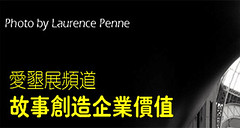Iconada.tv 愛墾 網
文化有根 創意是伴 Bridging Creativity
Comment
-
Comment by Host Studio on April 12, 2024 at 9:11am
-
陈明发·文物馆说真的,这绝对是件好事。国内近年文物馆林立,说明我们这族群,尊重历史、不忘来时路。
既然展现的,是“文”“物”,除了老东西、旧照片......,有比较完整的故事,不是更有趣吗?
抱歉地说,许多“文物馆”,其实是杂物馆。
很多人把家里觉得是“鸡肋”的“老东西”
送到了馆里去,好像“遗产”得到了“保护”
问起这是什么?答曰:
以前的碗啊、以前的锅头啊、以前的日历啊......
说一声"以前",就算是“历史”了,加上一声“啊”,加重语气,也算是“极有价值了”。
有些人在开馆日去走了一轮,馆长说要提倡地方旅游,请大家告诉大家多来“亲近历史”、“走入传统”。
男男女女回答说:好的好的,我刚才拍了很多照片,已经分享出去了。
不一会,男男女女回答说:网友回复我了——说他们在别的馆也拍过很多很多这样的东西......
他们还说,他们不明白,这些东西跟他们有什么关系?
(12.4.2024)
-
Comment by Host Studio on March 28, 2024 at 8:14am
-
ELP and Local NGOs
By: Dr. Tan Beng Huat
Founder, www.iconada.tvAt www.iconada.tv, we're all about spreading the wonderful philosophy of ELP (Enterprise Learning for Place, or 乡产学 in Chinese). It's our little way of helping blend local enterprise experiences, learning programs, and homegrown innovation initiatives. And you know what? One of the coolest ways to live out this philosophy is by championing home-based tourism.
Take Kum Eng Tiong, for example. He took his buddies from the B-G Guild on a tour to the Klang Palace and the Selangor Royal Gallery. These spots might be intimate landmarks for us Klangites, but believe it or not, many folks in our city aren't familiar with these hidden gems. Imagine if more of us knew about these places – we could become even better hosts or volunteer ambassadors, enticing more friends to come and explore Klang with us.
There's so much wisdom right under our noses, from our cultural heritage to our historical treasures. But oftentimes, we don't fully appreciate their value until we learn their stories. Plus, sharing narratives that resonate with everyone brings us closer together and strengthens our social bonds – which, let's face it, is the bedrock of our community's progress.
We're really excited about Kum's leadership and can't wait to see more ELP programs come to life, making Selangor's tourism scene even more vibrant and inviting. Cheers to that!
New Agenda for Nation Building
www.iconada.tv has published Kum Eng Tiong's photos and stories with two objectives:1. To explore which scout experiences can be further developed for pioneering local social progress.
2. To investigate whether NGOs like Scouts and YMM (many of us used to have double memberships, which are both recognized by the Malaysian Youth Council) can serve as vehicles for promoting people's understanding of 3R topics to prevent unnecessary disputes.
This forms a solid foundation for cultural creative ELP (Enterprise Learning for Place, such as Selangor in general, and Klang in particular).
No action is needed at this juncture, but there's no harm in thinking about it and strategizing.
-
Comment by Host Studio on March 26, 2024 at 8:57pm
-
陈明发博士〈想去侏罗纪公园激流探险?先试试泛舟巴生河〉
世界上极大部分令人眷念不已的地方,都和大江长河有关。闭上眼,你会想到上海黄浦江;伦敦泰姆斯河;巴黎塞纳河;维也纳多瑙河;布拉格伏尔塔瓦河......。银幕上除了可以常看见这些迷人河流,也可以看见令人充满复杂情感的电影场景:《印第安纳琼斯》(夺宝奇兵系列)、《神鬼奇航》(加勒比海盗系列)、《失落的世界》(侏罗纪公园系列)等的丛林水域惊险奇观。
这些银幕胜地,一点都不虚幻,还实实在在进入了迪斯尼乐园、环球影城,等着人们活生生乘上丛林巡航或急流胶艇,或缓或急开向充满惊吓的水上探险之旅。
在我们的大自然里,也有不少让参与者惊呼不已的怒水湍流,是考验团队精神、身心协作的天然生态。
主题乐园虽有意想不到的人工设置重重迭迭,但毕竟事先做了万千般的安全考量。天然大河的急流泛舟,考验的不止是胆子;许多突如其来的演变,挑战往往更惊险。
若来一趟长时间的河上泛舟,而那顺流或逆流的工具只是木筏,会是怎样的一个情景?
若干年前,在现实生活里,就曾有一群乐行童军(Rover Scout),为数二十二人,分乘九排木筏,在吉隆坡古晋路旁的峇都河(Sungai Batu,意为“石头河”)下水,直朝巴生港口的方向航行。天色暗了,前路难测,他们就上岸扎营生火烧饭。天乍亮,继续漂流。
四天三夜,当中有人的木筏在第三天就沉没了,唯有含泪放弃。最后,唯有10人分乘5个木筏,完成了这趟创意冒险。这样的体验设计,不管是否如愿抵步终点,对个人身心与团队合作,都是极致的磨练。难怪许多人至今还是津津乐道。
說到底,如是的“疯事”,一生能有几回?
它更有深一层的意义:拉近了人们对他所居城市的认识与情感。就像漫步使人熟悉有关城里的种种细节。不仅仅有关那人那事物,还有其温度与气息的领会。
和我们平时赶捷运或堵车子所感受到的,很不一样的真实经历。
巴生谷人口数百万,有几个人漂游过巴生河庞大的网络?它起源于雪彭边界的吉冷水库石英岩山脊,流经鹅唛、峇都、十五碑、孟沙、班台谷、旧巴生路、蒲种、八打灵、梳邦、布特拉高原、莎亚兰……最后进入巴生港口所在的马六甲海峡。
它其实还有把安邦、克拉容、古腰、白沙罗与本查拉等河道包括进来的替代方案。事情发生在许多年前,这些河域两岸的城镇现在多数是繁华地段,但在那群年轻男女玩河上乐行时,很多地方还是极朴实、原始的风景。
有心者要设计现在的类似巴生河划舟活动,不妨向主题乐园偷师,采集沿途地点的传说、事件等叙事,在特定景点来个打卡点、登岸体验项目或酌量感官刺激的安排。
记录在案,十余年前,有新政权的大臣提过复活巴生的全盘愿景,我还兴致勃勃安排了一众商团领导去聆听大计。现在,其人不但不在位,也不在世了。与“生态城市”建造无关的其他愿景,有谁还记得?(26.3.2024 原创)
甘荣仲·当童军成为粗旷的罗浮 When Boy Scouts Become Rugged Rovers(Photo Credit: Kum Eng Tiong)
-
Comment by Host Studio on March 25, 2024 at 11:28am
-
King, Prince of Monaco visit Pahang animal Sanctuaries
TEMERLOH: Yang di-Pertuan Agong Al-Sultan Abdullah Ri’ayatuddin Al-Mustafa Billah Shah and Prince Albert II of Monaco visited two animal conservation centres in Lanchang here.
The Regent of Pahang Tengku Hassanal Ibrahim Alam Shah was in attendance.
Also present were Pahang Mentri Besar Datuk Seri Wan Rosdy Wan Ismail, Human Resources Minister V. Sivakumar, Deputy Natural Resources, Environment and Climate Change Minister Datuk Seri Huang Tiong Sii, and Wildlife and National Parks Department (Perhilitan) director-general Datuk Abdul Kadir Abu Hashim.
The royal guests started by visiting the Malayan Tiger Conservation Centre (MTCC), which began operations in February 2022 and currently houses five Malayan tigers – including two that were rescued from tiger-human conflict, namely four-year-old Atan who was caught in Kerteh, Terengganu, and four-and-a-half-year-old Bihai who was found in Gua Musang, Kelantan.
ESG Positive Impact AwardsSultan Abdullah and Prince Albert then proceeded to visit the Kuala Gandah National Elephant Conservation Centre (PKGKG), about 8km away from the MTCC, which currently houses 25 elephants, Bernama reported.
When signing the guest book at PKGKG, the Prince expressed his appreciation for the efforts carried out by MTCC and PKGKG, adding that their work is absolutely essential.
“Many thanks for the valuable work on biodiversity protection led by theMTCCand PKGKG.
“The elephants and Malayan tigers deserve our full attention to keep them from extinction,” the Prince wrote.The royal visitors were also introduced to Elly, the six-year-old female elephant that has to use a prosthetic leg after being caught in a wire trap by poachers in Jeli, Kelantan. They were later “entertained” by seven elephants named Kasturi, Pian, Abot, Alam, Rambai, Timor and Lasah.
Sultan Abdullah and Prince Albert also fed the elephants and watched them bathing in the river at the conservation centre during their visit.
(The Star Wednesday, 29 Nov 2023)
Related:
陳明發博士 《文創技能系列 30》:山魔、樹妖與女鬼
King, Prince of Monaco visit Pahang animal Sanctuaries
-
Comment by Host Studio on March 24, 2024 at 12:51pm
-
陳明發〈新加坡環球影城:沉浸式創意體驗〉
一家人最近到新加坡喝喜酒,顺道同游了新加坡环球影城。多数的体验项目入口处,都有一面大牌子善意提醒:
你的心脏还好吧?做过什么大手术吗?脊椎骨跟其他骨骼还牢靠吗?精神状态可稳当?血压会否突然失控?......
太多了,意思意思根据个人了解记述一点。总之,任何后果自负;先小人后君子,他们免责。
大儿子陪着老爸老妈兜了一圈,除了拍拍照片,看看纪念品,吃点冰淇淋,观赏街头的嘻哈、小黄人演出,好像就可以回家了。那免排队直通道的入门劵,要来干嘛?虽说年初才在医院玩过一回“动脉造影”,医生说我的心脏还堪用,但年事毕竟不小了,凡事量力而为啊。
量力到什么程度呢?老二老三有伴,早消失于影城不懂那个园区,和他们之前的大阪环球体验做比较或复习去了。
而我身边的妻儿二人,总不成就随我坐着。爆米花总会吃完的;就这样耽误下去吗?
不管了,只要不是那单单看一眼,膝盖都溶掉、下巴跌脱臼的云霄飞车,其他的都不妨试试吧。“老公,行吗?” 这辈子好像还没看过老婆这么忧愁的眼神。
不就是一家出来玩了吗?有必要这么苦、这么不自信吗?
豁出去就回不了头!想都不想就进到《变形金刚》(Transformer)3D体验馆,坐上擎天柱(Optimus Prime)其中一个战友Evac(撤散)的过山车,带上 3D眼镜。冲啊~~~
其实也不是那么鲁莽的啦。我刚才在街道上打量过,这科技基地整座大楼的高度,远不及那全场最高处的冲天飞车,应该不会死人。再说,过山车忽高忽低忽坠崖的轨道,设在黑暗的洞穴里,搞不清自己究竟悬挂在什么空间。眼不见为净,就不害怕了。
坦白说,我此生就是患上“惧高症”,才没胆做领导。
这回不甘寂寞随一众变形金刚,说是正义凛然去打击邪恶集团、拯救地球,躲在暗处叫喧正合宜。很符合眼下一般网民的作业形态。
岂知,那无边无际的黑暗,全为了那立体的3D影音而设置。明知一切都是那要命的眼镜在作怪,可是那过山车在身历其境电影场景的秒变影像与震耳声响中,一会儿急速低空掠过危机四伏的都会建筑群;一会儿为了躲过敌方凶狠飞来的攻势,还没回过神来车子又钻进地铁隧道。脑震荡了,记不得太多其他细节......。
只记得我们原来不只是一昧逃难而已,而是要去捍卫“绝密的巢穴部队” (NEST)总部,大家于是随汽车人飞上了高空,在直耸云霄的摩天大楼群顶,不让你有机会喘口气,就神龙摆尾闪避毫无预警的突袭,而我们好像县在龙尾最末处。
以为安全了,一眨眼却坠机失控似地,从高楼天台直线往下掉。眼看要血肉模糊撞地面了,车子及时拉平、落地......到站了!
彻体沉浸的巨响与虚拟具象,结合上穿山车的剧烈冲力与震动,那体验可说是穿透了骨髓。
我们家还有一份额外的音效赠品。和我们同车的三位印尼女生,那“呀呀呀呀”、“呀呀呀呀”的惊叫声,撕心裂肺的声量从一开车就没停过。不仅没沙哑,还一直保持着很一致的节拍。
有学人认为诗与韵律天生的关系,与颤栗经验有关;这么说来,变形金刚也不是那么冰冷、机械,还能催发诗性呢。
下得车来,我除了觉得有点累、有点晕外,一切安好,倒是妻子说:我的右脸好像没感觉了。坏事了!找个地方坐下看看。过了一会儿,她居然说:我好了;走,看还有什么好玩的!
我这才发现,自己不头晕了,却似乎累得有点沉,只好跟大儿子说,陪你妈妈坐侏罗纪河流探险船筏去。我再坐一会儿大概就好了。
暂时先讲到这里,职业病发作讲点题外话。活该你累。
环球影城把他们拥有智慧产权的电影故事资源,开发成创意体验活动,全世界去开发园区,一家老少可以酌量参与。
其实,我们也有许多民间体验的原产叙事,例如乐行童军(Rover Scout)的自然河流探险。有皇家童军所分享的野外活动记录可以佐证这点。
各行各业许多行家都拥有丰富的实战经验。若能良好地结合各地具体的故事资源,设计成大家可以参与的体验项目,会是异常珍贵的“创意文旅”产品。
乡镇复兴也就不再是白说的,何需老是盯牢人家碗里那口饭。我奶奶生前说,锅里有了,各自的碗里才会有。
说远了,真累。(24.03.2024 原創)
-
Comment by Host Studio on March 24, 2024 at 12:36pm
-
Comment by Host Studio on March 2, 2024 at 8:26pm
-
首届「一带一路」语言服务国际学术研讨会在阿拉木图召开
人民网阿拉木图9月23日电(记者 谢亚宏)为纪念习近平主席2013年9月在哈萨克斯坦首提同世界各国共建「丝绸之路经济带」倡议3周年,加强「一带一路」沿线各国语言学者的合作与交流,提升「一带一路」沿线国家语言服务能力,江苏师范大学和哈萨克斯坦阿里-法拉比国立民族大学22日在哈萨克斯坦阿拉木图举办了首届「一带一路」语言服务国际学术研讨会。来自「一带一路」沿线国家20多位学者,以及哈萨克斯坦民族大学150多位师生参加了会议。本次会议的中方筹备组负责人、江苏师范大学余光武教授在开幕式致辞中指出,「一带一路」所有愿景与规划的实现,都要以语言相通为基础,建设「一带一路」,必须语言先行!提升语言服务能力,共筑「一带一路」愿景,成为包括我国在内的沿线65国当前亟需开展的一项重要工作。
首届「一带一路」语言服务国际学术研讨会开幕式演说人,马来西亚海丝会创会人/会长陈明发博士分享「软实力的叙事基础:怎样说好一带一路故事?」心得后,与部分国际与会嘉宾合照。
基于此考虑,中哈两校决定举办首届「一带一路」语言服务国际会议,藉此平台集聚沿线国家语言服务研究专家代表,共商各国「一带一路」语言服务能力提升大计。开幕式后,来自哈萨克斯坦民族大学的苏尔丹加里耶娃教授、江苏师范大学语言科学研究院王仁法副院长以及马来西亚的陈明发博士,分别作了题为「中亚研究史中的哈萨克斯坦地位考察」、「‘一带一路’沿线国家语言国情与语言服务能力」及「软实力的叙事基础:怎样说好一带一路故事?」的大会演讲。
其中的王仁法副院长的演讲反响最为热烈。演讲中,结合数据分析,王院长提出,「一带一路」语言种类繁多,大多数国家语言国情复杂,「一带一路」语言服务能力亟需提升,解决此类问题需要各国语言学者共同努力,探索出一种科学高效的合作模式,本次会议正是探索这种模式的有益尝试。在下午的研讨会上,来自匈牙利、罗马尼亚、格鲁吉亚、马其顿、拉脱维亚、乌兹别克斯坦等国语言服务研究专家及中哈两国代表在会上分别介绍了各自国家的语言国情及语言服务现状,探讨了「一带一路」背景下沿线各国汉语国际教育面临的机遇与挑战。最后,余光武在总结中指出,本次会议的意义不仅仅是一次学术研讨会,还应被视作一个「一带一路」沿线国家语言学者参与到「一带一路」这个关乎各国发展大计的工作平台。在这次会议上,我们各国代表将通过交流建立深入的合作和长久的联系,以便开展后续的各国语言服务人才的培养交换、语言服务工具书的编纂以及语言文化研究等工作,为推动「一带一路」愿景在各国的实现做出特有贡献。(责编:李雪峰(实习生)、杨牧)(2016年09月23日20:27 | 来源:人民网-国际频道)
-
Comment by Host Studio on February 28, 2024 at 6:44pm
-
江北愚翁·骨灰級
「骨灰級」這個說法,最初是在一些愛好者領域流行起來的,如音響、電腦(硬件)、攝影等領域。這些領域的愛好者在互聯網上掀起發燒熱潮時,網絡游戲因為網速和計算機運算速度的限制,還未流傳開來。「骨灰級」來源於「發燒友」,發燒到極致,就燒成骨灰了,成為「骨灰級」的發燒友,這是「骨灰級」的來源。
在網絡游戲中,「骨灰級」最早來源於「暗黑破壞神 II」漢化中最特別的一個難度的名稱。因這個游戲的經典性,在之後該名稱也迅速被運用網絡上,並且基本專指游戲。相對於骨灰級,還有菜鳥級,中鳥級,老鳥級。
發燒友:形容痴迷於某種事物。「發燒友」這個叫法源自於香港,是香港人對早期的「音響器材愛好者」的稱呼。
[愛墾網註評:說起「發燒友」三字,中文電影中最經典的鏡頭,要數香港經典《無間道》。梁朝偉演的警方在匪幫的臥底,以及劉德華演的匪幫在警方的臥底,因為高級音響發燒友而走到了一起,從聽覺世界談到了人生人生境界......]
屌絲:惡搞稱謂。出自《後漢書 ·岑熙傳》:「我有枳棘,岑君伐之;有蟊賊,岑君遏之;狗吠不驚,足下生氂。」,形容渺小的屌絲如同灰塵一般,再怎麼吠叫也無法掀起大風大浪,折射出社會的殘酷與無奈,後來為了方便交流故簡稱為「屌絲」。他們身份低微、生活平庸,不滿無聊生活卻又接受現狀。他們不被社會認可又渴望維護自尊,但不知道該怎麼去做。他們仍有自我實現的欲望,但沒有明確目標,懶洋洋毫無生氣。這種生存狀態和心態,在年輕群體中甚為普遍,於是在網絡廣泛共鳴、流傳,最終形成「屌絲文化」。小鮮肉:小鮮肉最早是2014年中國粉絲對韓國男性明星的稱呼,相對女性明星的稱呼小花而言。
變色龍:政治上善於變化與偽裝的人。
老油條:南陽、襄陽方言中的油子、老油子、老油條、溜子、二溜子、溜光蛋,說的就是那些下三賴之人,不務正業,偷雞摸狗,偷人家的,搶人家的,自古以來根深蒂固,自春秋戰國代代相傳,亙古至今,時光在流失,人的本性卻難移。這些東西在少數人的身上,表現得淋漓盡致。在網路上一方面指一個人在某論壇混了很久,對這個論壇的情況很了解,建交很廣等等。另一方面的意思是比較精通社會上的人情世故,處理事情比較的老道。也有「大蝦」的含義。
大蝦:在網絡用語中,大蝦是相對於菜鳥的一個名詞,大蝦是指那些善於應用網絡,具有一定網絡技術水平的人。實際上就是大俠的意思。大蝦是大俠的諧音,也可能指代大俠坐在電腦前的時間長了,背就會像大蝦!
中山狼:「中山狼」一詞,出自明代馬中錫。《東田文集》中的《中山狼傳》,也出現在曹雪芹《紅樓夢》中對賈家二小姐迎春的判詞。「子系中山狼,得志便猖狂。金閨花柳質,一載赴黃梁。」指忘恩負義之人。(知乎)
-
Comment by Host Studio on February 16, 2024 at 12:56pm
-
How Storytelling Can Drive Strategic Change
Conventional wisdom says that when confronted with a major organizational change– one that shakes the very foundations of how a company does business– top executives need to leave their offices and venture out among the frontline employees to make sure that everyone understands what is at stake and embraces the organization’s strategy for change.
Memos are written, speechwriters summoned, PowerPoint slides prepared, and communications plans developed all to get everyone ‘‘on the samepage,’’ ‘‘rowing in the same direction,’’ or ‘‘singing off the same sheet.’’ E-mails are sent, meetings called, retreats planned, and newsletter articles published, all to insure
that, at the end of the day, the new value proposition and business model have been ingrained in the culture.
Thenleaderspackuptheirstuff,go backtotheiroffices,and waitto seethe seedsof change take root and blossom. Usually, not much happens, leaving managers scratching their heads and l am enting to each other about how much people hate to change. Whydoesn’t this standard managerial approach work?
Andwhy,aftersomanyfailedattempts,doleadersstill use it?(How storytelling can drive strategic change, Article in Strategy and Leadership · January 2006 [DOI: 10.1108/10878570610637876], Four Author including: Notes: 1. B. Joseph Pine II and James H. Gilmore (1999), The Experience Economy: Work Is Theatre & Every Business a Stage, Harvard Business School Press, Boston, MA, chapter 10 in particular. 2. Stephen Denning (2000), The Springboard: How Storytelling Ignites Action in Knowledge-Era Organizations, Butterworth-Heinemann, Woburn, MA, p. xiii. Corresponding author: Gary Adamson is the corresponding author and can be contacted at: gary@starizon.org)
Related:
Story Time 故事時光 001
叙事·創意
故事人心靈素質
《愛墾展頻道》
-
Comment by Host Studio on February 15, 2024 at 10:22pm
-
Let’s examine the underlying assumptions on which the ‘‘Just Tell ’Em’’ approach is based:
First, it assumes that the front-line employees have the needed context and background
information required to understand major changes in strategic direction. However,
frequently even the managers, who have much more information, confess that they don’t
fully understand what it all means.
Second, it assumes that employees totally accept the decisions of their top executives.
This is most dubious, especially after several ‘‘major’’ change efforts have come and
gone.
Third, ‘‘Just Tell ‘Em’’ assumes that employees don’t have valid ideas of their own about
where the company should be going. But they do, and while they may be forced to deal
with the conclusions and actions of management, they will still draw their own conclusions
and act accordingly.
Fourth, this approach assumes that change is basically an information issue and that if
employees just knew the reasons why it would be good to change, they’d change.
However, change is as much about relationships, emotions, and gut feel as it is about
facts.
And, lastly, this approach assumes that no ‘‘fluff’’ or entertainment value is needed;
because the subject matter is so very important and the people presenting it so
noteworthy, employees will pay attention even if it’s boring. However, this assumption flies
in the face of that old saying that ‘‘Great teaching is one-fourth preparation and
three-fourths theatre.’’
‘‘ So the key message executives should take away from this story on stories is: don’t just spend countless hours, valuable brain cells, and barrels full of money doing the research, analysis, goal-setting, and implementation planning necessary to come up with an industry-altering strategy.’’
So if this standard approach doesn’t work, why do so many leaders keep doing it? The reason may be as simple as this: it’s hard for even the most courageous leader to bet the future of the company on something he doesn’t know how to do. And few executives know how to tell the stories required to elicit organizational transformations.
A good story inspires
A good story always combines conflict, drama, suspense, plot twists, symbols, characters, triumph over odds, and usually a generous amount of humor– all to do two things: capture your imagination and make you feel. It draws you in, places you at its center, connects to your emotions, and inserts its meaning into your memory. That is why storytelling must becomeanintegraltoolofcorporatestrategy. Stories create the experience that lets strategy beunderstood at a personal level[1]. In order to be effective, strategy must not just inform, it must inspire. And people are never inspired by reason alone. That’s why the ‘‘Just Tell ’Em’’ approach usually fails. It totally overlooks the role emotion and meaning play in any life-altering action. And if your strategy isn’t about transforming the way your company and its employees do business, why do it?
Storytelling develops relationships by helping everyone realize we all have issues in common. Stories crystallize common values and beliefs. They build stronger teams and a stronger sense of community. Stories invite people to bring the ‘‘whole person’’ to work (both heart and head), and therefore elicit much more thorough perspectives and meaningful commitments. They create a context for work aspirations and thus make each employee feel more valued. In short, stories have the potential to revitalize the way we do business.
愛墾網 是文化創意人的窩;自2009年7月以來,一直在挺文化創意人和他們的創作、珍藏。As home to the cultural creative community, iconada.tv supports creators since July, 2009.
Latest Activity
Videos
-
鬼王大士爷
Added by engelbert@angku张文杰 0 Comments 70 Promotions
Blog Posts
《愛懇網》14週年(2009-2023)誠意禮贈
Posted by 馬來西亞微電影實驗室 Micro Movie Lab on February 18, 2021 at 5:30pm 19 Comments 64 Promotions
陳明發:文創的文化要素
Posted by 馬來西亞微電影實驗室 Micro Movie Lab on February 21, 2021 at 11:00pm 8 Comments 38 Promotions
柳敬亭說書
Posted by Host Studio on May 14, 2017 at 4:30pm 11 Comments 47 Promotions
Good and Fond Memories - Dedicated to all those born in 1940's, 1950's & 1960's
Posted by 用心涼Coooool on July 7, 2012 at 6:30pm 39 Comments 49 Promotions
愛墾雲端藝廊: 戀戀·文物館
Posted by 就是冷門 on August 24, 2013 at 10:00pm 75 Comments 76 Promotions
愛墾網特寫·新冠肺炎:人文景觀
Posted by 罗刹蜃楼 on April 6, 2020 at 11:30pm 39 Comments 61 Promotions
陳明發《2019新冠肺炎 觀察紀事》
Posted by 葉子正绿 on April 2, 2020 at 5:00pm 76 Comments 64 Promotions
《愛墾雲端藝廊》~~味蕾主題館
Posted by Rajang 左岸 on August 26, 2013 at 8:30am 28 Comments 57 Promotions
社會企業的定義
Posted by 來自沙巴的沙邦 on November 4, 2015 at 7:30pm 3 Comments 73 Promotions
Creative Industries Policy in Malaysia
Posted by Dokusō-tekina aidea on January 5, 2016 at 9:00pm 35 Comments 69 Promotions
© 2024 Created by 馬來西亞微電影實驗室 Micro Movie Lab.
Powered by
![]()






You need to be a member of Iconada.tv 愛墾 網 to add comments!
Join Iconada.tv 愛墾 網